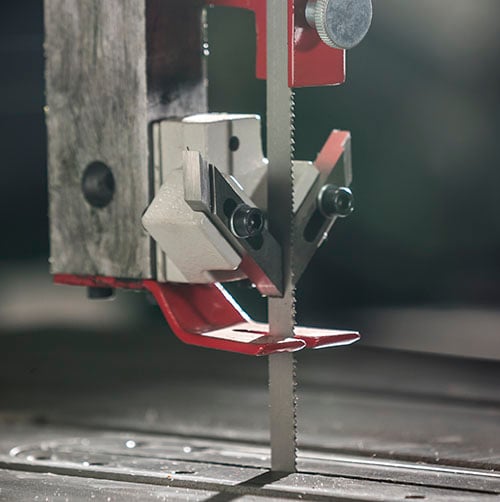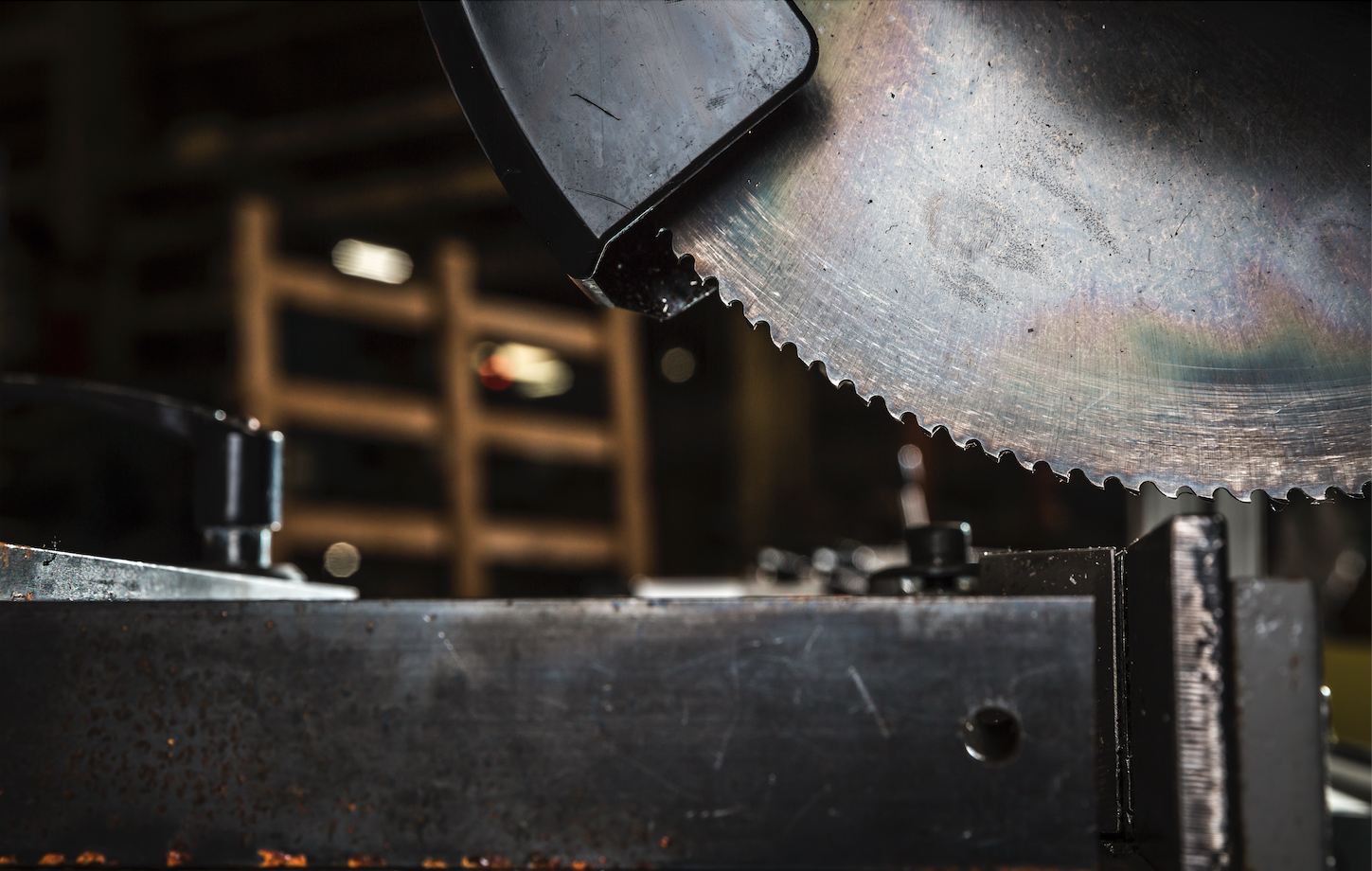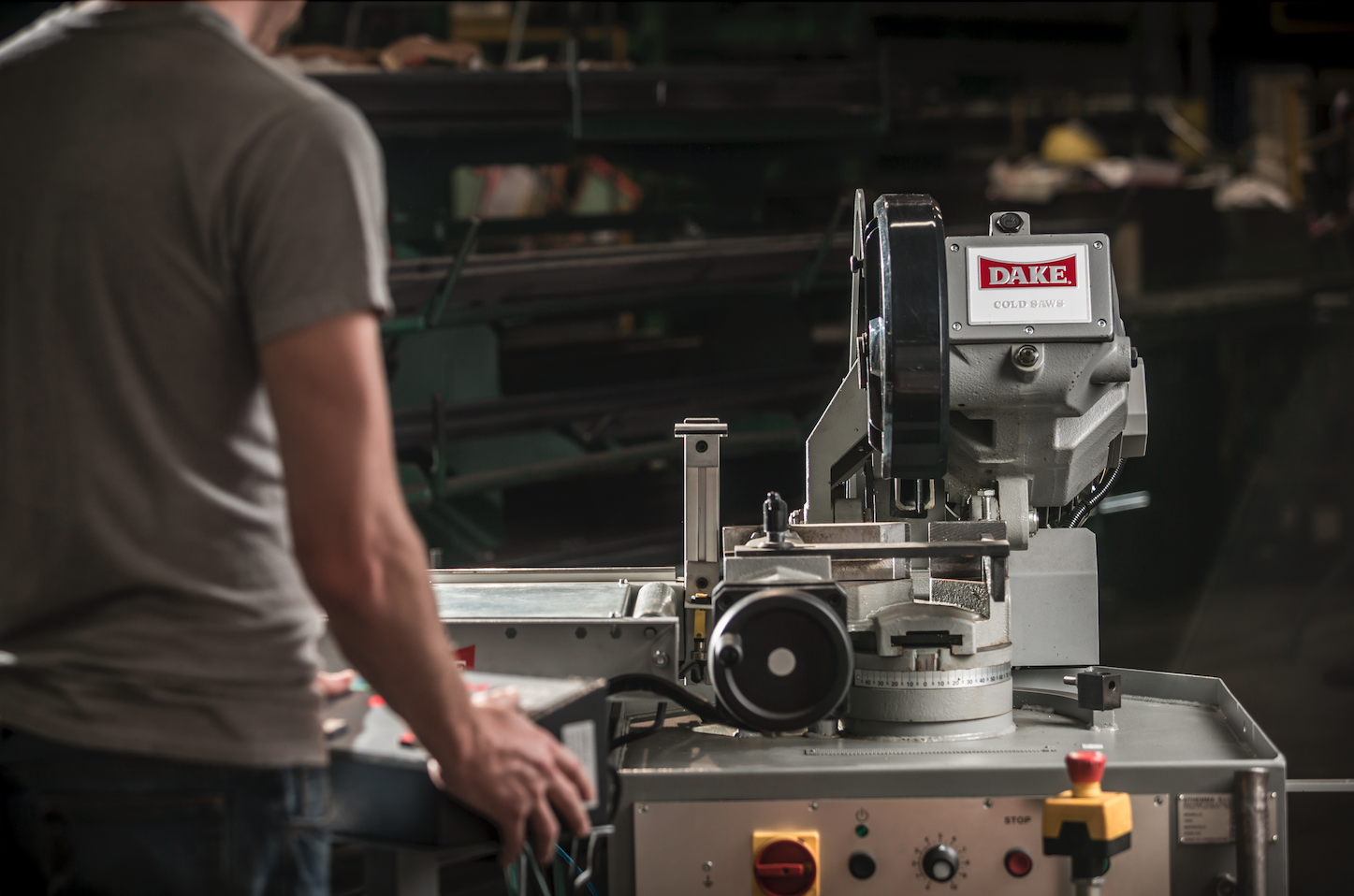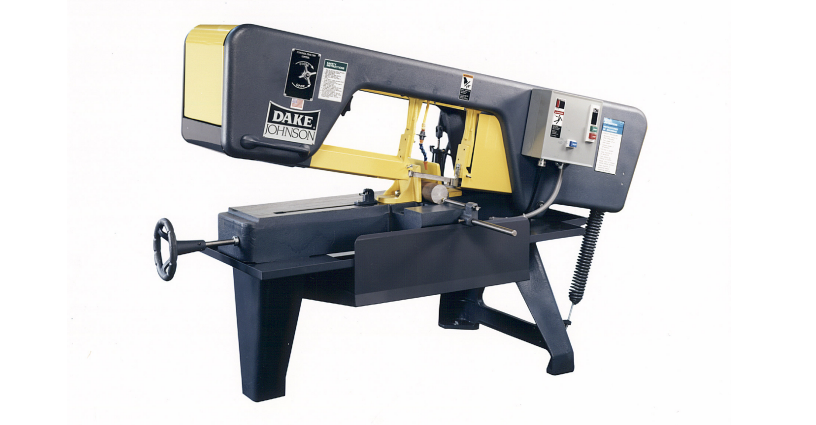Making sure your saw blade is working properly is the best way to reduce downtime and increase production.
There are many common causes that can cause blade failure from blade selection to cutting speeds, feed rates and improper break-in, to maintenance problems and more.
In order to help you extend the life of your blade, we have compiled a run down of 16 of the most common blade failures and their causes.
1. Heavy wear on tips & corners of teeth
- Blade speed is too fast for material generating high heat at tips causing rapid wear.
- Feed rate is too low causing teeth to rub material instead of cut.
- Coolant is the wrong type or mix and is not cooling the blade properly.
- The material being cut is hardened or abrasive. (i.e. Fiberglass abrasive)
2. Wear on sides of teeth
- Not enough teeth set allowing teeth to rub in kerf.
- Teeth may be hitting guides or machine causing rapid wear on one side of blade.
- Speed is too fast for the type of material being cut causing extreme temperature at teeth.
- Blade is too wide for radius being cut (Mostly seen on vertical band saws)
- Material very hard or abrasive.
- Teeth running through side of guides.
4. Chipped or broken teeth
- Handling damage
- Feed rate is too high
- Feed pressure is too high
- Improper break-in
- Wrong tooth pitch
- Teeth may be hitting part of the machine
- Hard material is being cut or hard surface scale
- Hard spots in material
- Material is not positioned or clamped properly, or there is movement of material during cut
- Wrong type or lack of coolant
- Chip brush is not cleaning teeth properly
- Improper butt-weld on blade
5. Tooth stripping
- Feed rate is too high
- Feed pressure is too high
- Improper break-in
- Wrong tooth pitch
- Teeth may be hitting part of machine
- Hard material is being cut or there is hard surface scale
- Hard spots in the material
- Material is not positioned or clamped properly or there is movement of material during cut.
- Wrong type or lack of coolant.
- Chip brush is not cleaning teeth properly
- Improper butt-weld on blade
6. Chips welded to teeth tips
- Feed pressure is too high
- Chip brush is not removing chip causing it to fuse to teeth tips
- Band speed is too fast creating high temperatures
- Wrong type or lack of coolant
- Material make-up: Some materials such as Titanium have chip-welding tendencies.
7. Tooth gullets loaded with chips
- Tooth pitch is too fine for material causing there to be not enough chip clearance
- Excessive feed pressure is producing extra large chips for gullet size
- Chip brush is not working, adjusted, or missing
- Coolant problems
8. Heavy wear on side of blade
- Guide adjustment is too close/tight
- There are worn guides that do not ride on the blade properly
- Blade guide is out of alignment
9. Scoring on side of blade
- Worn or broken guides
- Blade guide is out of alignment
- Band is rubbing on some part of the machine
- Chip removal is inadequate
- Abrasive material is being cut
- Blade is too wide for the radius being cut. (Most seen on vertical saws)
10. Cracks in gullets
- Blade too wide for band wheel radius
- Improper guide alignment
- Excessive blade tension
- Excessive feed pressure
- Excessive blade speed
- Improper blade tracking
- Teeth contacting guides
- Excessive feed pressure
- Nicks or scratches in blade backing can lead to cracks
- Worn, missing or defective back up guide
- Side guide out of alignment
- Improper blade tracking
- Excessive blade tension
12. Cracks in the side of the blade
- Guide is too tight, hardening the blade and causing cracks.
- Defective side guides
13. Heavy wear on back edge of blade
- Worn, missing or defective back up guide
- Improper blade tracking
- Excessive feed pressure
14. Swaging of the back edge of the blade
- Worn, missing or defective back up guide
- Improper blade tracking
- Excessive feed pressure
15. Band broken in the body or at butt weld
- Defective weld
- Improper anneal
- Deep or rough weld grind
- Weld flash left in gullet
- Sharp notch left in side or gullet when grinding
16. Work hardening of back band edge
- Excessive feed pressure
- Excessive band speed
- Guides are broken or out of alignment
All of the blade failures on this list are preventable! Be sure to take the time to maintenance your saw blade and check the feed rates and components and you will be on your way to a long lasting blade.
-1.jpg?width=1200&height=525&name=DAKE003_%20Logos_Red%20(002)-1.jpg)




